Video emerges showing attempt to feed Fat Guts the crocodile
A well-known crocodile is destined to spend his life in captivity after illegal feeding led to his removal from the wild.
QLD News
Don't miss out on the headlines from QLD News. Followed categories will be added to My News.
A WELL-KNOWN crocodile dubbed Fat Guts has been removed from the wild thanks to people illegally feeding the 4.5m monster.
Mark Norman of Whitsundays Crocodile Safari said the apex predator was removed from the Proserpine River by Department of Environment and Science wildlife officers on January 18.
“Careless, foolish people have been illegally feeding him,” he said.
“People have been hanging dead wallabies off the banks and chicken carcasses too.
“He’ll take the bait and then swallows the rope (it’s attached to), which is generally coughed up after a couple of weeks.
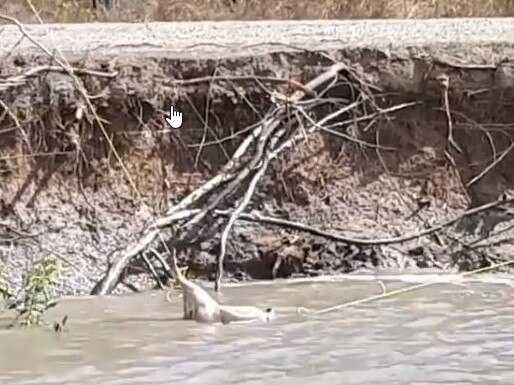
Fisherman’s late night croc sighting
Croc sightings soar: They’re not afraid of humans anymore
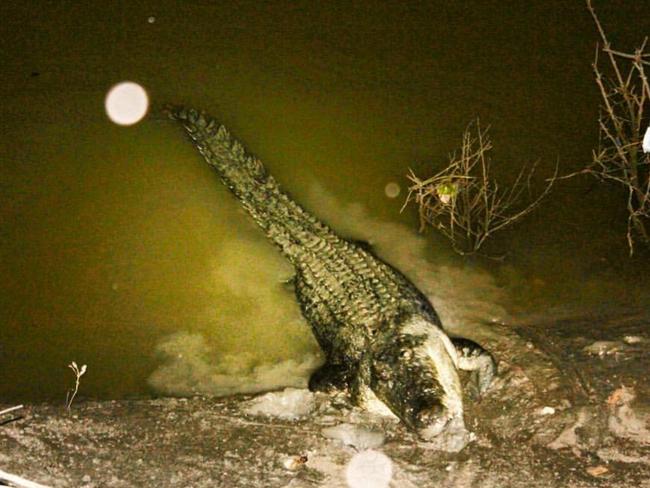
A video taken by Mr Norman and posted to his Instagram account shows a dead wallaby strung by two ropes floating in the water while people wait in a van nearby.
“We’ve had a real problem with locals and tourists who have been illegally feeding crocodiles off the bank,” he said.
“It’s against the law to feed crocodiles … and creates dangerous habits as it gets the crocodiles used to coming up to people for food.
“The potential danger is that if someone had fallen off the riverbank into the water below he could have taken or attacked somebody.”
The tour guide said Fat Guts, who was named about 15 years ago, had taken to lurking around a popular spot named The Landing on Glen Isla Road where people fished in the past year.
“Quite often, he would only be a couple of metres down from your feet while fishing,” he said.
“We’ve spent many years viewing this crocodile from our tour boats and he’d quite often be sitting there with a female right beside him.
“It’s an unfortunate thing for the crocodile. That was his territory and he had every right to live in that river.”
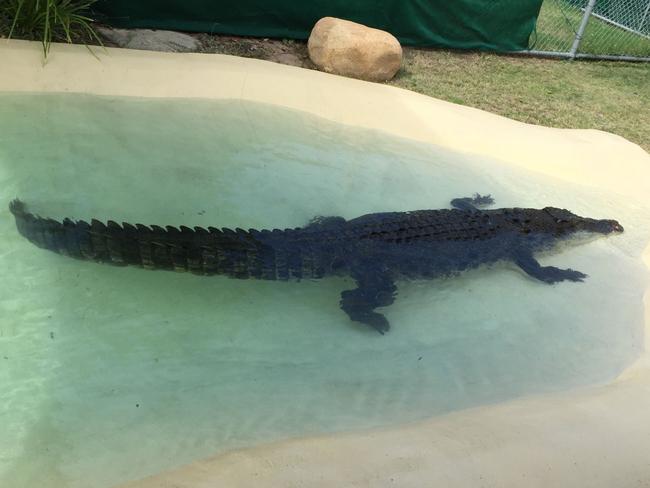
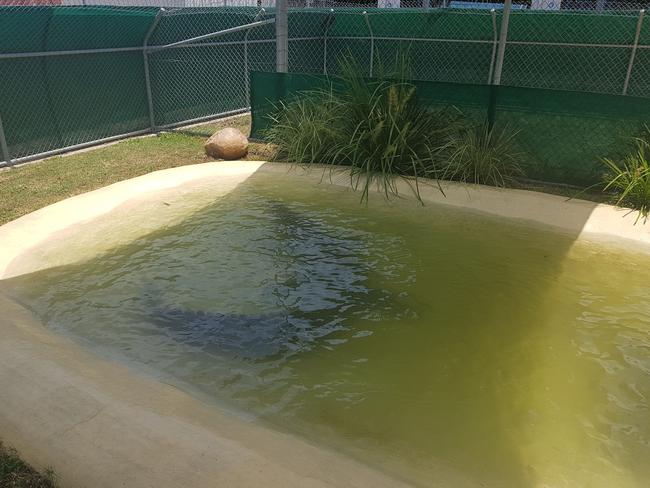
Mr Norman said he was saddened by the removal of Fat Guts and urged the Department of Environment and Science to crack down on the illegal feeding.
“Selfish, illegal activity caused this crocodile to be removed from his territory. It’s very much a human problem.
“The department needs to get tough on people for doing this or it will happen again. Another crocodile will move in and they’ll start doing the same thing.
“You can’t keep removing crocodiles and keeping the fools in action.”
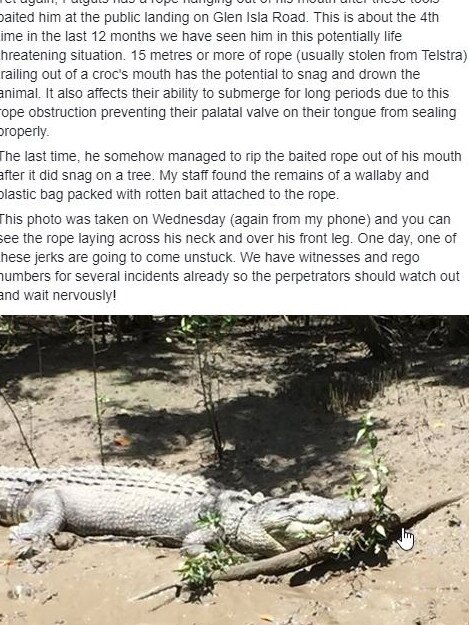
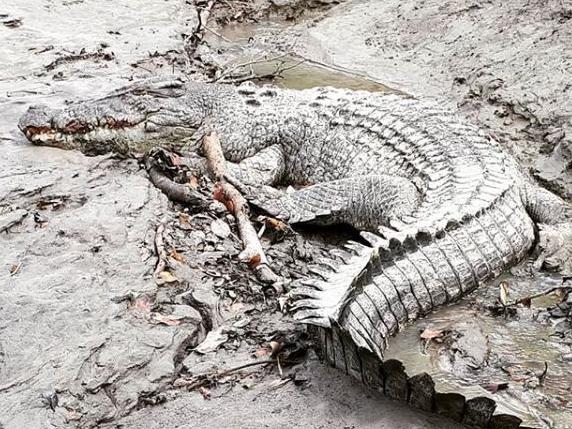
A Department of Environment and Science spokeswoman said a large crocodile was recently removed, but she could not confirm if it was Fat Guts, who was believed to be anywhere between 30 to 70 years old.
Senior Wildlife Officer Tony Frisby said when wildlife officers arrived to assess the area, the large crocodile immediately approached the river bank and remained there until they left.
“Based on the dangerous behaviour displayed by the animal, it was declared a ‘problem crocodile’ and targeted it for capture and removal,” he said in a statement.
He said a number of ropes were removed from the crocodile’s mouth, which he said was evidence the salty had taken a number of baits.
Mr Frisby stressed the importance of not feeding crocodiles.
“Members of the public are advised not to feed crocodiles or dispose of fish scraps or bait near the water’s edge or boat ramps,” he said.
People caught illegally feeding crocodiles can be fined $5222 under Queensland’s conservation laws.
As Fat Guts is larger than 4m, he will be dealt with as an ‘icon crocodile’ under Queensland’s conservation laws, meaning he can only go to a crocodile farm or zoo that promotes crocodile conservation.
The DES spokesman said the crocodile was first placed in a holding pen in Cairns but had since been moved to Townsville until a new home was found.
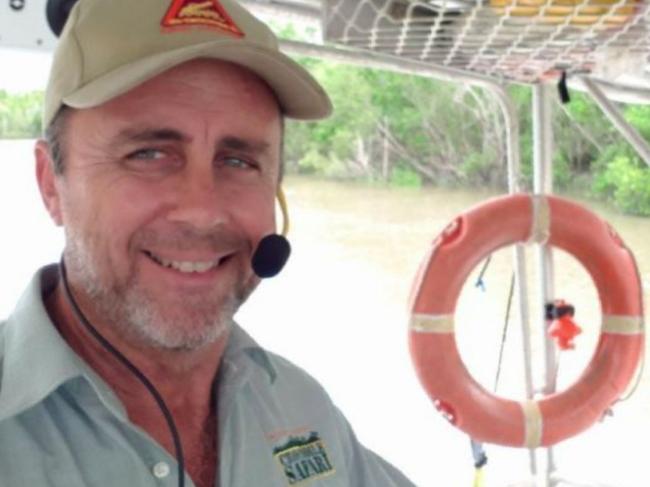
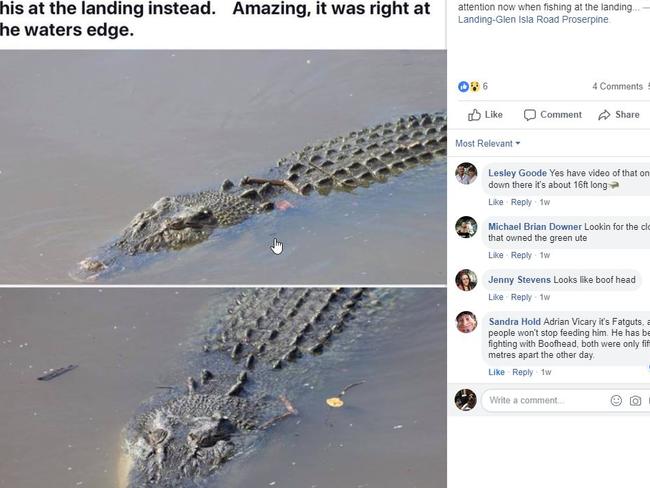
Mr Norman said the removal of the dominant male crocodile means the area was now open for more crocodiles to move into the territory.
“There are slightly smaller males patrolling the river looking for territory,” he said.
“They would move through his territory but he was good at keeping other crocodiles out.
“You could end up with three there. You could increase the crocodile population by removing a much larger animal.”
Fat Guts was shot by an arrow in 2013 and is said to have been baited a number of times in an attempt by unknown people to kill him over the years.
His two females were currently nesting.
Members of the public are encouraged to report crocodile sightings to DES as soon as possible by ringing 1300 130 372.
Estuarine crocodiles were hunted to the brink of extinction in Queensland for their skins until 1974.
They are now listed as a vulnerable species in Queensland.
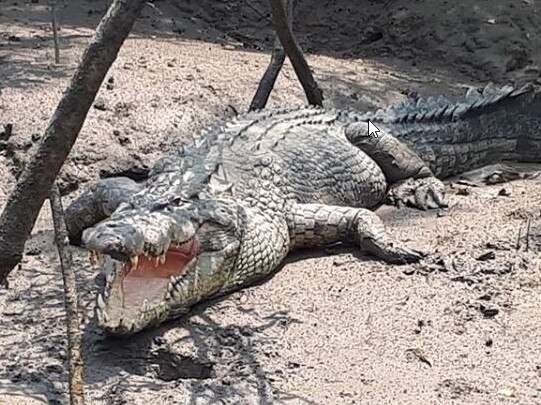
Be Crocwise:
- Expect crocodiles in all north Queensland waterways even if there is no warning sign
- Obey all warning signs – they are there to keep you safe
- Be aware crocs also swim in the ocean and be extra cautious around water at night
- Stay well away from croc traps – that includes fishing and boating
- The smaller the vessel the greater the risk, so avoid using canoes and kayaks
- Stand back from the water’s edge when fishing and don’t wade in to retrieve a lure
- Camp at least 50 metres from the edge of the water
- Never leave food, fish scraps or bait near water, camp site or boat ramp
- Never provoke, harass or feed crocs
- Always supervise children near the water and keep pets on a lead


